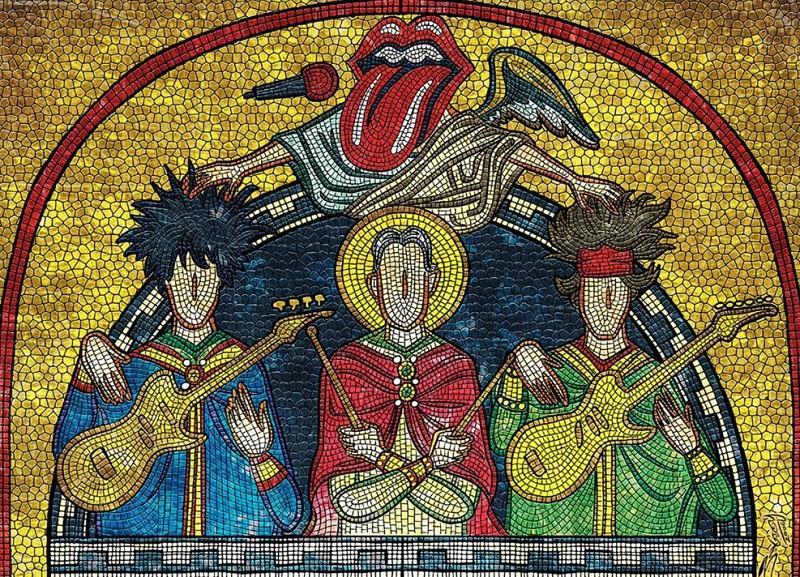
Pera Museum and the Istanbul Research Institute are presenting two exhibitions simultaneously with the sole focus on Byzantine.
The first one, which focuses on Byzantine artifacts in the Istanbul Archaeological Museums, is “From Istanbul to Byzantium: Paths to Rediscovery, 1800–1955,” which explores the central role of the Ottoman capital in shaping the emerging discipline of Byzantine studies.
Curated by Byzantinist Brigitte Pitarakis, the exhibition examines the central role of the Ottoman capital in shaping Byzantine studies, focussing on an area that has not been studied enough until now and bringing together an impressive selection of archival holdings and archaeological material from the Byzantine collections of Istanbul Archaeological Museums.
Many outstanding libraries, archives and private collections from Turkey and abroad contributed to this selection. Rare books, original photographs, documents, maps and prints illustrated in a flamboyant style specific to the period were brought together in thematic integrity in the exhibition.
Nejad Melih Devrim and Fikret Mualla’s Byzantium-inspired paintings reveal the influence of this heritage on modern art, while Tayfun Öner’s 3D animation, which deals with the extraordinary career of Istanbul born astronomer Eugène Antoniadi, looks at Byzantium through the lens of science fiction.
Pitarakis points out that the transformation of the Byzantine heritage into a wide area of interest was examined for the first time in this exhibition.
“Beyond looking at various moments in the city’s life from 1800 to 1955, the exhibition From Istanbul to Byzantium also considers the dynamic of Istanbul as a center of gravity attracting the monetary and intellectual wealth of empires to further knowledge of Byzantium, ultimately resulting in the emergence of Byzantine studies as a discipline. It sheds light on the complex issue of Byzantine heritage in modern history by presenting the perspectives of the political, economic and cultural actors in Istanbul during the period covered,” she said.
The other exhibition, titled “What Byzantinism Is This in Istanbul! Byzantium in Popular Culture,” focuses on Byzantium’s representation in popular culture. It brings together contemporary novels, metal music, comics and graphic novels, visual arts, video games, movies and fashion.
“What Byzantinism Is This in Istanbul!” borrows its title from Yakup Kadri Karaosmanoğlu’s two-part novel Panorama I-II (1953–1954), where his protagonist exclaims these lines, being frustrated with postwar Turkish society.
Karaosmanoğlu precisely knew what he meant by Byzantinism, referring not only to the social unrest and hostility among the nation’s citizens but also the superstitions raging among society at the time, for they found the chaos they were living in otherwise inexplicable.
Curated by Emir Alışık, the exhibition explores multiple and conflicting meanings of Byzantinism and questions popular culture’s interaction with the Byzantine legacy by scrutinizing a selection of motifs representing Byzantium in popular culture.
It ushers the audience in with an iconostasis, the sacred threshold for the Byzantine congregation, a screen between the worldly and the otherworldly. Traditionally, it narrates the Holy Scriptures with very elaborate descriptions, yet, in the exhibition, it emphasizes the impact of Byzantine portraiture on the contemporary depictions of iconic and transcended characters of our times.
The exhibition features works by more than 50 artists, writers, illustrators, musicians, filmmakers and fashion designers that interpret and visualize the uniqueness and exoticism attributed to Byzantium from different perspectives.
Max Bedulenko, Aliusio Cervalle Santos and Yurii Nikolaiko bring new perspectives to the Byzantine city and its monumental architecture with their digital illustrations. While Jonathan Godoy, Stelios Faitakis, Taha Alkan and Xanthe P. Russell transform scenes taken from a holy book, Peter Tirpák portrays a pop-art icon and Aleksandar Todorovic portrays the founder of Facebook as a saint.
Also, illustrator-designer Necdet Yılmaz portrays the famous cat of Hagia Sophia, Gli, who died last year, as a celestial being.
The two exhibitions can be seen until March 6, 2022.